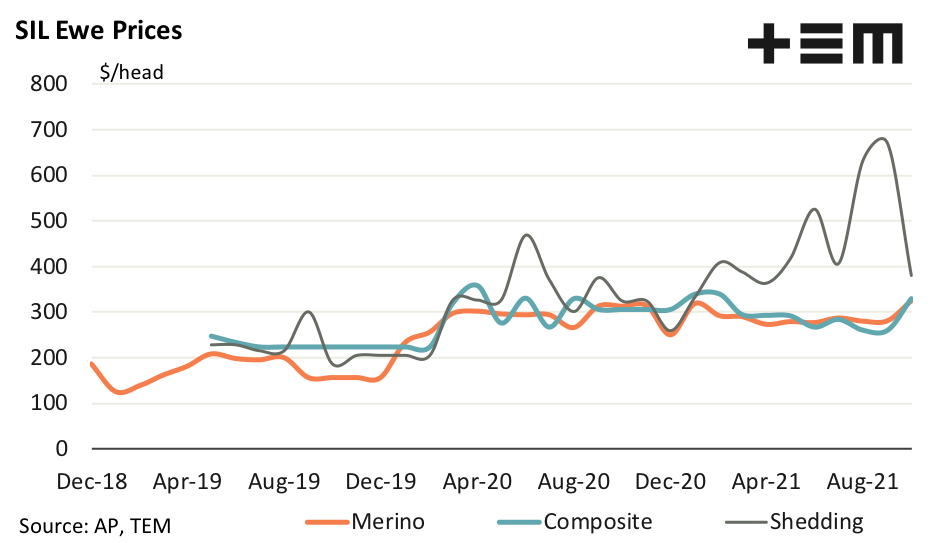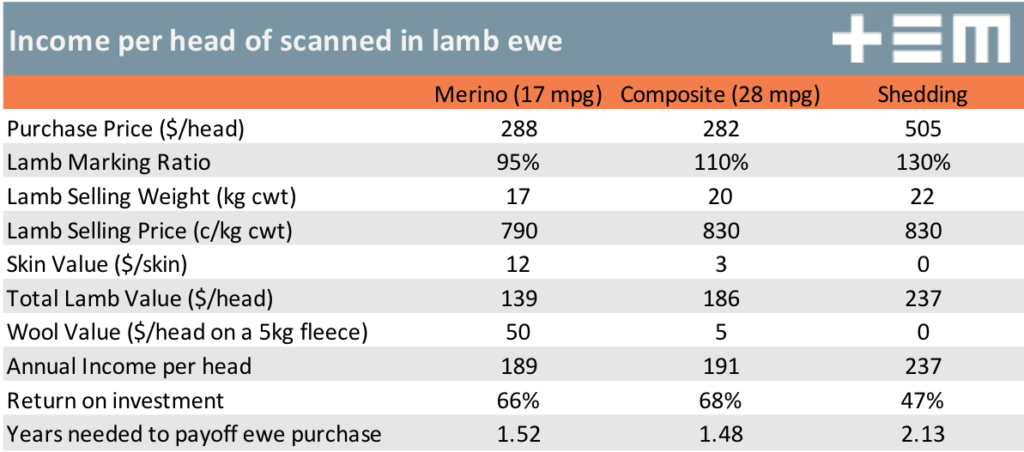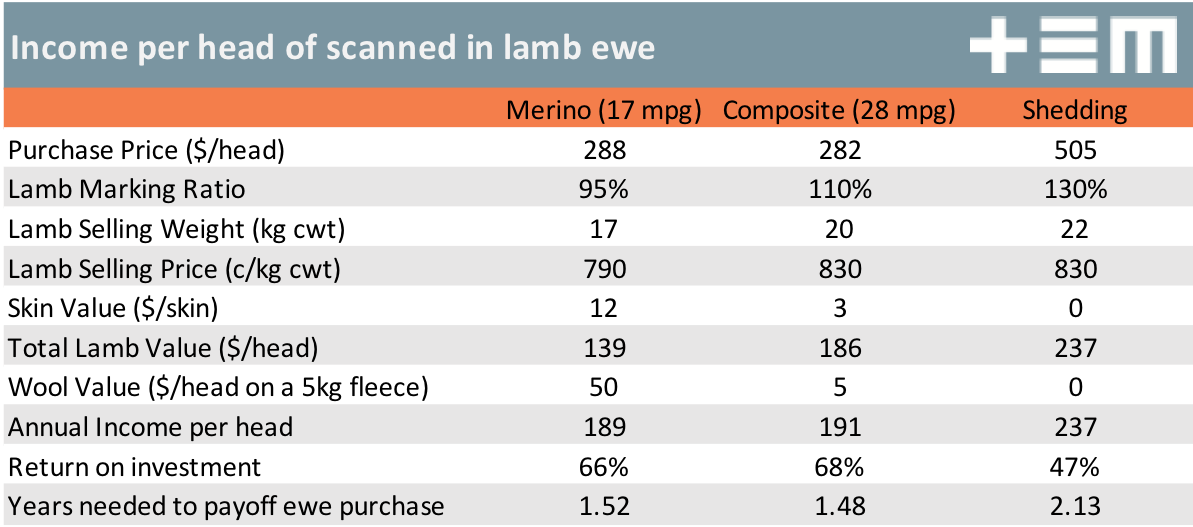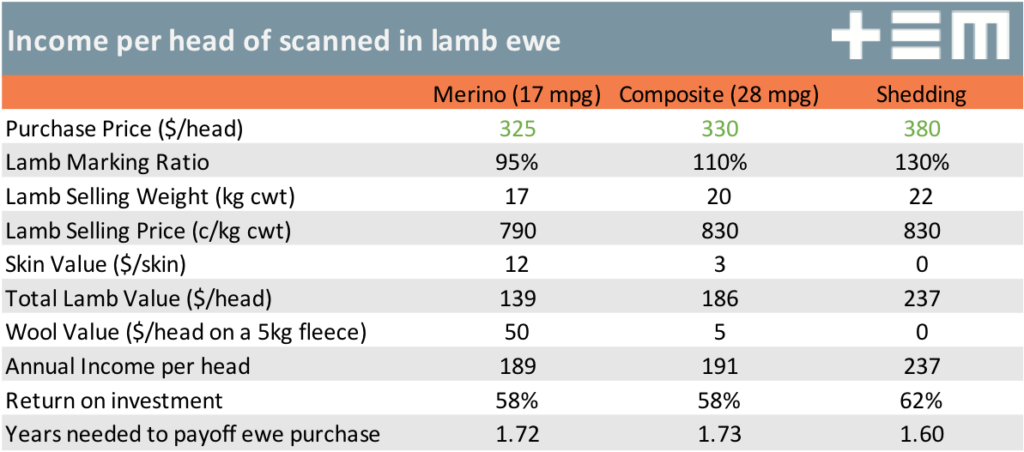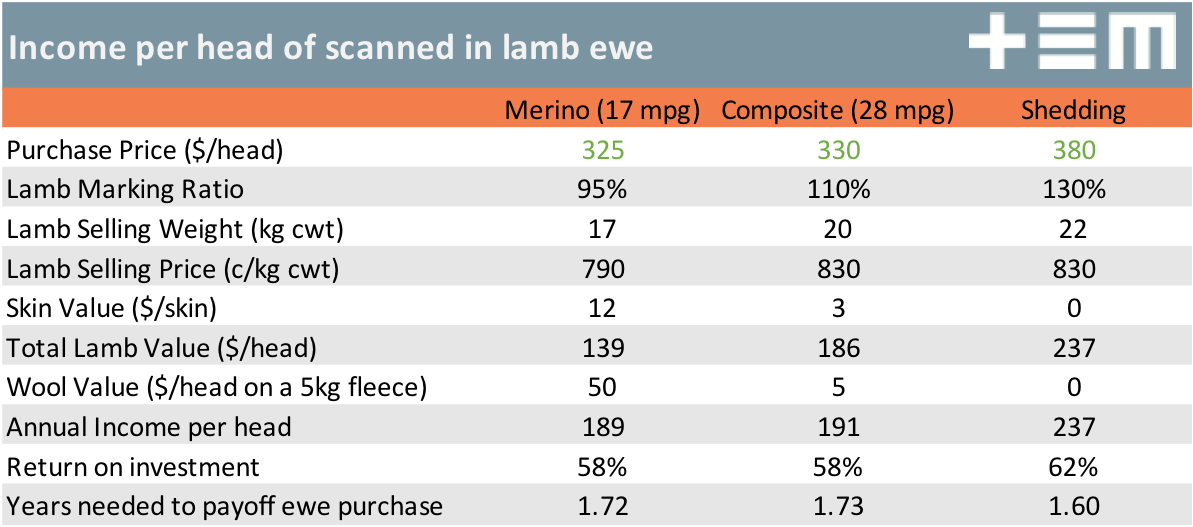Quid game

The Snapshot
- Over the last six months SIL shedding ewes have averaged a price of $505 per head on the AP platform.
- In contrast, Merino SIL ewes have averaged $288 per head and composite SIL ewes have managed $282 per head.
- Based on the six month average prices, the return on investment for the Merino and composite SIL ewes are fairly similar at 66% and 68%, respectively. This equates to a payoff time frame of about 1.5 years.
- However, purchasing a shedding variety at approximately $500 per head, demonstrates a return on investment of 47%, or a payoff time frame of just over 2 years.
- Based on current SIL ewe pricing for October 2021 all three enterprises are pretty similar with returns nearer to 60% and a payoff time frame of around 1.6 to 1.7 years.
The Detail
The price of scanned in lamb (SIL) ewes for some shedding varieties of sheep has surged in recent months, particularly for Australian Whites. The Auctions Plus platform recorded prices over $1300 per head for a handful of particular types of Australian White SIL ewes last month, but these prices aren’t the norm for the shedding varieties.
A regular subscriber got in touch with us to run the numbers on shedding SIL ewes versus composite and Merino ewes to see if the price hike for the shedding varieties have made them uneconomic. Average monthly price data obtained by Auctions Plus (AP) across the range of shedding varieties (not just Australian Whites) shows that the dollar per head value nearly breached $700 in September for SIL ewes.
Indeed average pricing for SIL shedding ewes had been climbing steadily since the start of 2021. However, October has seen prices return to more normal levels at an average of $380 for the month, so far. Over the last six months SIL shedding ewes have averaged a price of $505 per head on the AP platform. In contrast, Merino SIL ewes have averaged $288 per head and composite SIL ewes have managed $282 per head.
Using the average prices for the last six months as a purchase guide for SIL ewes we ran some numbers on the profitability and payoff on the three types of SIL ewe. Bear in mind, the numbers used in this calculation are an estimate of what we believe to be the average outcome across the nation.
We are aware of producers, such as our subscriber that asked us to look at this scenario, that are achieving much higher lamb marking ratios for their shedding sheep. However, we are attempting to take the middle ground rather than focusing on what the top 20% of producers are achieving in their enterprise.
The recent MLA-AWI sheep producer survey outlined the average national lamb making rates for Merinos at 94% and Non-Merino Ewes at 110% so we thought that was as good a base as any to begin. We have made an assumption that the net value of wool produced is based off an average 5kg fleece per animal and takes into account costs associated with obtaining/selling the wool such as shearing, broker fees, etc. We are sure that some producer maybe cutting more and earning more, but again we are focusing on the average outcome. Pricing for the wool value was based on a 17 micron price for the Merino and a 28 micron price for the composite ewe, with a once a year shearing schedule.
As the table above outlines, the return on investment for the Merino and composite SIL ewes are fairly similar at 66% and 68%, respectively. This demonstrates that it would take about one and a half years to pay off the value of the SIL ewe purchase price of around $280-$290 per head.
However, purchasing a shedding variety at approximately $500 per head, which was the average price achieved for these types over the last six months, is starting to become a little less economic. It shows a return on investment of 47%, or a payoff time frame of just over 2 years. Increasing to a $700 per head purchase price for SIL shedding ewes pushes the payoff to nearly 3 years, meanwhile $1300 extends it to about 5.5 years.
As previously noted, October has seen prices for shedding varieties of SIL ewes decline to $380 per head and Merino/composite prices have increased toward $325-330 per head. A re-run of the analysis based on these current SIL ewe prices shows that all three enterprises are pretty similar with returns nearer to 60% and a payoff time frame of around 1.6 to 1.7 years.

